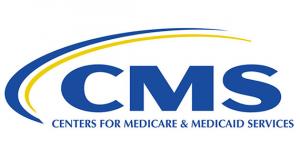Insurance carriers are about to rebate another $1.1 BILLION to policyholders thanks to the ACA.

I haven't written about the ACA's Medical Loss Ratio (MLR) program in over a year. Here's a very simplified explainer:
Ever since the ACA went into effect in 2011 (3 years before newly-sold policies had to be ACA compliant), to help reduce price gouging, insurance carriers have been required to spend a minimum of 80% of their premium revenue (85% for the large group market) on actual medical claims.
Put another way, their gross margins are limited to no more than 20% (or 15% in the large group market). Remember, that's their gross margin, not net; all operational expenses must come out of that 20% (15%). The idea is that they should be spending as much of your premium dollars as possible on actual healthcare, as opposed to junkets to Tahiti or marble staircases in the corporate offices, etc. Anything over that 20% (15%) gross margin has to be rebated to the policyholder.
Put simply, let's say that your insurance carrier brought in $100 million in premium revenue, but only spent $70 million in actual medical claims, giving them a MLR of 70% instead of the 80% minimum. Under the MLR rule, they have to pay back the $10 million they overcharged their enrollees!
Now, let's say your 2020 ACA insurance premiums cost $800/month, or $9,600 for the full year. Under the MLR rule, you'd be repaid around $960 of that!
Now, in practice, it gets more complicated for several reasons: For one thing, the MLR formula is calculated on a 3-year rolling average, so if your carrier underestimated their expenses in 2019 or 2019 (ending the year with an MLR over 80%) that would cancel out some or all of the 2020 windfall. However, the bottom line is that over the years, ACA enrollees have received billions of dollars in rebated excess premiums:
- 2011: $399.5 million nationally (per-person breakout not available)
- 2012: $192.2 million to 2.73 million people ($70/apiece on average)
- 2013: $128.3 million to 2.10 million people ($61/apiece on average)
- 2014: $238.2 million to 2.14 million people ($111/apiece on average)
- 2015: $107.4 million to 1.19 million people ($90/apiece on average)
- 2016: $102.9 million to 904,000 people ($114/apiece on average)
- 2017: $132.5 million to 967,000 people ($137/apiece on average)
- 2018: $769.3 million to 3.70 million people ($208/apiece on average)
- 2019: $1.72 billion to 5.18 million people ($332/apiece on average)
- 2020: $1.33 billion to 4.77 million people ($279/apiece on average)
- 2021: $476 million to 2.36 million people ($205/apiece on average)
This year, the Kaiser Family Foundation is projecting that another $500 million or so will be rebated to individual market enrollees from calendar year 2022...a bit higher than last year but far less than the crazy-high rebates of 2019 - 2020.
Assuming KFF's estimate is accurate (and there's no reason it shouldn't be), that would be around $6.1 billion rebated to ACA indy market enrollees since 2012...an average of roughly $508 million per year going to roughly 2.5 million people per year, or around $200 apiece per year, give or take.
It's important to note that the amounts above only include the ACA's individual market, not the small or large group markets, which have also rebated a similar amount (around $5.84 billion or so) to hundreds of thousands of small and large employers over the past 12 years.
I should note that while most of these payments are sent as checks directly to the enrollees in August or September, since the COVID pandemic hit there have been some carriers which already partially refunded the money in the form of discounted or waived monthly premiums earlier in the year based on projections for the rest of the year. Basically, some carriers have started using MLR rebates as a sort of quasi-PR campaign, spinning it as an altruistic measure on their part even though it's legally mandated by the ACA.
There's nothing really wrong with this; the carriers still have to make it clear why the rebates/discounts are being sent with the accompanying letters, but most people don't really bother reading that letter and as long as they get a check/rebate, what do they care?



